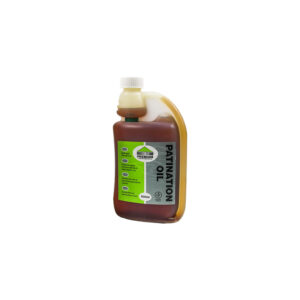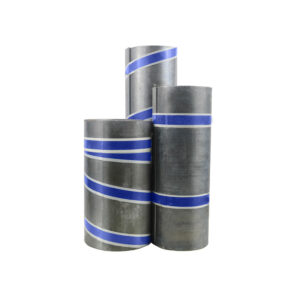Lead expands and contracts a great deal as per the temperature, which means that painting over the material is unlikely to be the best long-term solution.
Over time, as thermal movement takes place, cracks will begin to appear in the paintwork which is far from being aesthetically pleasing. Not only that, as the lead flashing oxidises, paint will not adhere well with a layer of white powder forming underneath.
Because of this, it is common practice not to paint over the lead flashing. Some contractors choose to leave the lead material uncoated, while others opt for patination oil, which is available to buy from ERoofing’s website.
Why Use Patination Oil?
Uncoated lead flashings will discolour over time, especially in UK weather which can be wet more often than not. Just as cracks in paintwork are unsightly, so too are discoloured flashings, which is why we would recommend the use of patination oil.
The oil allows for the lead flashing to breathe, therefore meaning oxidisation is not an issue, and the material is kept supple. If you have been searching for what type of paint to use on lead flashing, the answer isn’t painting at all – it is patination oil.
When applied correctly, the patination oil will protect the lead flashings for years as it safeguards against cracks and drying out. Signs that patination oil requires re-applying are when the lead flashing begins to look grey and/or weathered.
How to Apply Patination Oil
When working with lead, precautions naturally must be taken. This means wearing gloves so as to not touch the material directly, and to minimise the risk of breathing the lead in. If discolouration is really bad and requires treating, this can be done using a scrubber to gently rub off the white powder (make sure to wear a mask) and remove it by pouring water onto the flashing.
Make sure the surface is dry before applying the patination oil, otherwise it will not have the desired effect. To apply the oil, take a cloth and tip the oil onto it. Proceed to rub it into the lead. As you work the patination oil into the lead, it will become darker as it absorbs the oil.
Continue to rub the oil into the lead until you are satisfied with its appearance. By doing this, you won’t have to deal with peeling paint, which happens sooner than you might think.
Can I Paint Over Lead Flashing?
Yes, you can, but for the reasons already mentioned we wouldn’t advise it. Many properties do have painted lead flashings, with homeowners persistent on painting over the material despite the warnings given to them. If you are prepared to deal with the consequences of painting over the lead flashing, such as cracking and peeling, then go for it.
Due to the toxic nature of lead, we highly recommend reducing the number of times you have to come into contact with the material. We also recommend using patination oil to allow the lead to breathe, rather than allowing the material to oxidise and having to clear away the white powder that forms before applying a new coat of oil or paint.
Buy From ERoofing
When you buy from our website, you can benefit from next-day delivery on the majority of our products. This will ensure that you are able to stock up on all the materials and accessories you need for the job at hand.
At ERoofing, we stock patination oil and other products and accessories that will ensure that your project is a successful one. Please take the time to review our range of products on our website.
If you are still unsure about whether painting over lead flashing is a good idea or not, or if you would like to know what the best paint for lead flashing is should you absolutely not wish to use patination oil, then you can get in contact with a member of our expert team.










